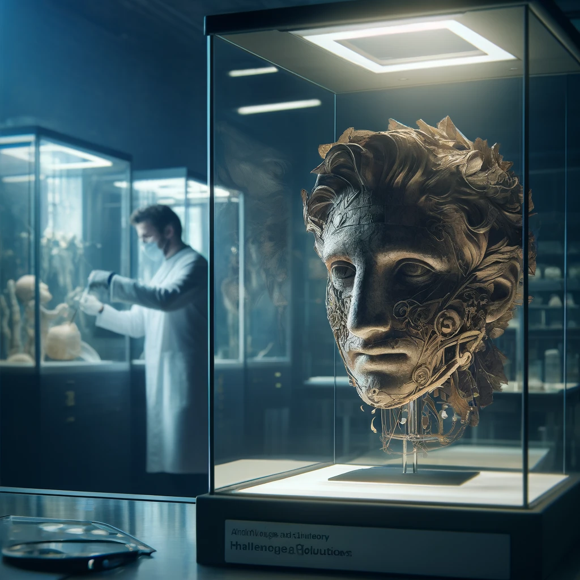Have you ever seen those amazing papier-mâché masks or detailed sculptures? This awesome, budget-friendly material has been around for ages, letting artists create everything from quirky decorations to life-sized animals! But here’s the thing: keeping these creations looking their best takes a little extra care. Unlike a metal statue, papier-mâché can be fussy about its environment. We’re talking things like too much humidity, bright light, or even hungry bugs! In this article, we’ll explore the special challenges of keeping historical papier-mâché pieces in tip-top shape, and some clever tricks to make sure they last for years to come.
Challenges in Preservation:
- Moisture and Humidity: Paper mache is highly sensitive to moisture, which can cause it to swell, warp, or even disintegrate. High humidity levels accelerate these processes, making proper storage conditions crucial for preservation.
- Physical Fragility: Despite its strength when dry, paper mache can become brittle over time, increasing the risk of cracks, tears, and structural instability, especially in older artifacts.
- Pest Infestation: Paper mache provides an attractive food source for insects such as silverfish and beetles, which can feed on the organic components of the material, leading to irreversible damage if left unchecked.
- Light Exposure: Prolonged exposure to light, especially ultraviolet (UV) radiation, can cause paper mache to fade and become discolored, compromising its aesthetic and historical value.
- Environmental Pollution: Air pollutants, including acidic gases and particulate matter, can accelerate the degradation of paper mache artifacts, leading to yellowing, embrittlement, and surface soiling.
Solutions for Preservation:
- Climate-Controlled Storage: Maintaining stable environmental conditions, including temperature and humidity levels, is essential for preventing moisture-related damage. Climate-controlled storage facilities help mitigate fluctuations that can harm paper mache artifacts.
- Conservation Treatments: Professional conservators employ various techniques, such as consolidants and adhesives, to stabilize and repair fragile paper mache artifacts, reinforcing weak areas and preventing further deterioration.
- Protective Enclosures: Placing paper mache artifacts in archival-quality enclosures, such as acid-free boxes or custom-made display cases, shields them from light, dust, and physical handling while allowing for proper ventilation.
- UV Filtering: Installing UV-filtering glazing on display cases or windows helps minimize light exposure, protecting paper mache artifacts from fading and discoloration without compromising visibility.
- Integrated Pest Management: Implementing preventive measures, such as regular inspection, proper cleaning, and strategic placement of insect traps, can help deter pest infestation and preserve paper mache artifacts in museum collections and storage facilities.
- Documentation and Monitoring: Thorough documentation of the condition of paper mache artifacts, including photographs and written records, facilitates monitoring for signs of deterioration over time, enabling timely intervention and conservation efforts.
- Education and Outreach: Raising awareness about the care and preservation of paper mache artifacts among collectors, curators, and the general public fosters a culture of stewardship and ensures the long-term survival of these unique cultural treasures.
In conclusion, while preserving historical paper mache artifacts poses significant challenges, proactive conservation strategies and interdisciplinary collaboration among conservators, scientists, and museum professionals offer viable solutions to safeguard these invaluable cultural heritage objects for future generations. By addressing the complex interplay of environmental, biological, and physical factors affecting paper mache, we can uphold its rich artistic legacy and historical significance for years to come.
